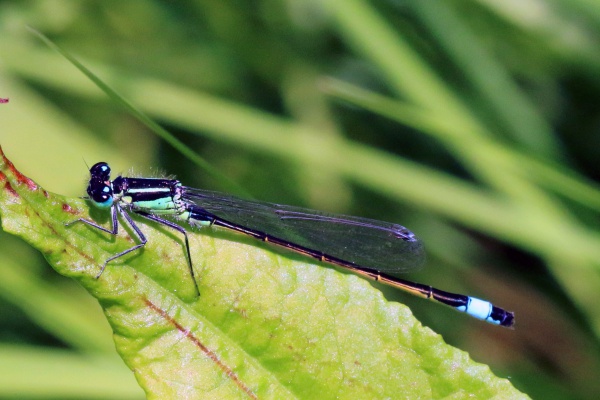Facts About Blue-tailed damselfly
The blue-tailed damselfly, commonly referred to as the common bluetail, is a captivating insect belonging to the Coenagrionidae family. This species can be found in various subspecies and varieties, such as Ischnura elegans ebneri, Ischnura elegans elegans, and Ischnura elegans pontica. They thrive in lowland areas with standing or slow-moving waters, including environments with brackish or even polluted water.
Adult blue-tailed damselflies are relatively small, measuring between 27 and 35 millimeters in body length, with a wingspan of approximately 35 millimeters. The males are easily identifiable by their striking blue and black patterns on the head and thorax, blue eyes, and a predominantly black abdomen with some pale markings. In contrast, females display a greater diversity in coloration, ranging from shades of salmon pink to blue, olive green, and pale brown.
These damselflies are typically observed from April to September or early October. They are adept hunters, capturing small flying insects with their legs while in flight or from leaves. Their nymphs, which dwell in water, feed on small aquatic insects and larvae. During mating, males frequently compete with one another, while females lay their eggs on floating plant material independently.
Blue-tailed damselflies are remarkable fliers, known for their agility and precision. Recent research indicates that they can adapt to the loss of a wing and still successfully catch prey, demonstrating their remarkable resilience and adaptability.

 Israel
Israel